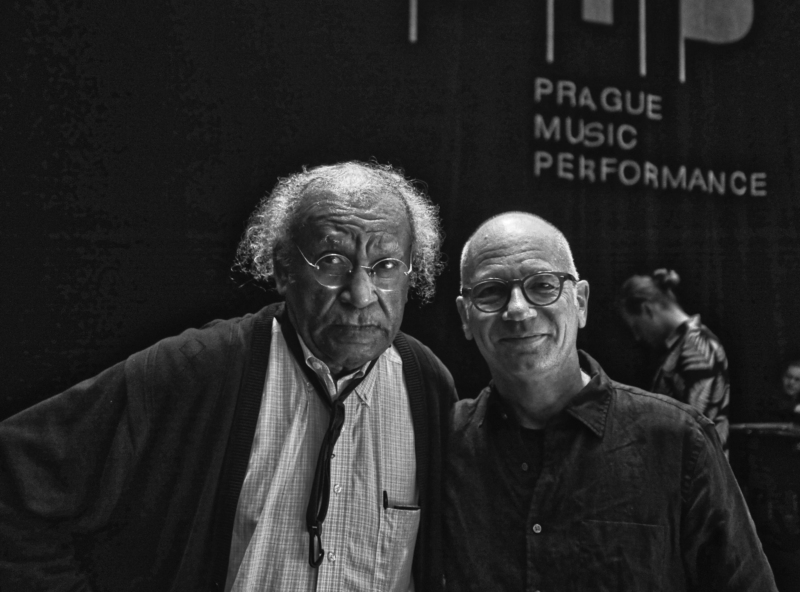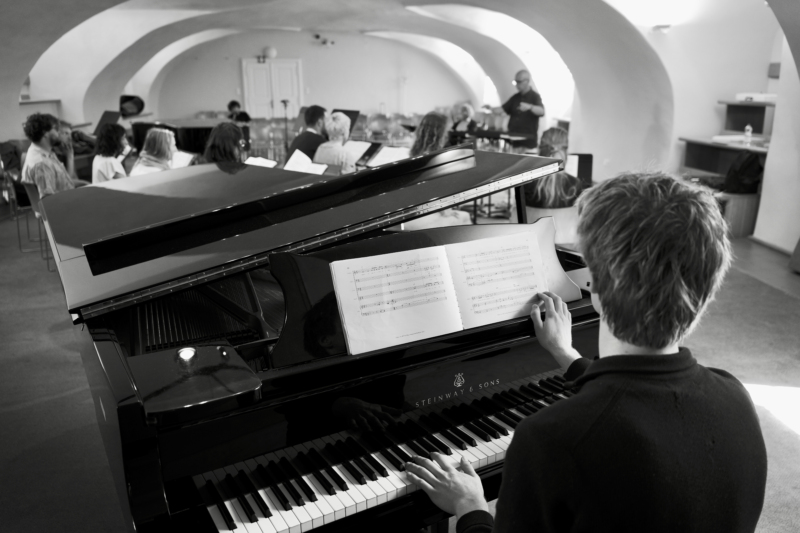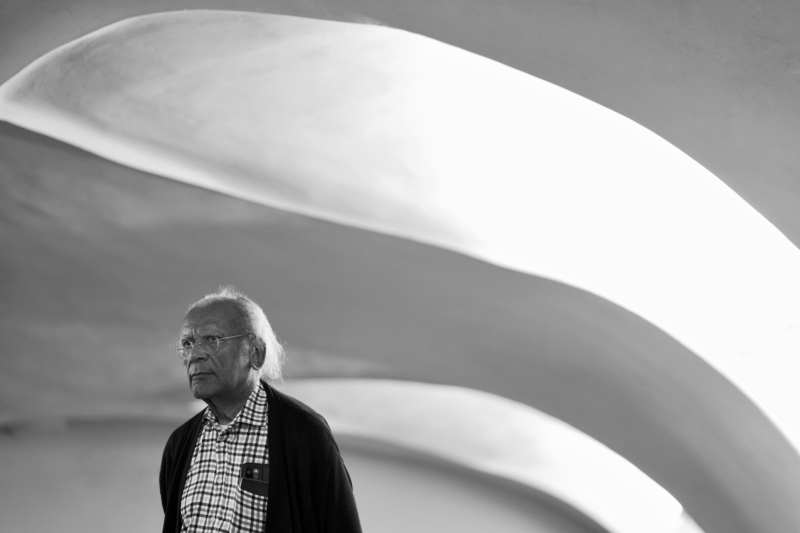READER: LANGUAGE MUSIC
05.08.2023

Anthony Braxton: Language Music – 40′
dirigierte Improvisation für Orchester
PMP Orchestra
Roland Dahinden (Musikalische Leitung)

PMP – Prague Music Performance Orchestra:
Anna Romanovská, Anna Ververková, Barbora Sulková
(1. Violine)
Jana Havláková, Anna Štěpánová (2. Violine)
Vít Nermut, Adéla Hýková (3. Violine / 2nd Violin)
Tomáš Vilím, Johana Antoňová (Viola)
Ian Mikyska (Viola da gamba)
Štěpán Drtina, Ondřej Holas (Violoncello)
George Cremaschi, Petr Tichý, Klára Pudláková (Kontrabass)
Andrea La Rose, Katarína Turčinová (Flöten)
Pavel Zlámal, Radim Hanousek, Michal Wróblewski, Marcel Bárta, Martin Debřička (Saxofone)
Petr Hlavatý (Fagott)
Rod Paton (Horn)
Dirdik Ingvaldsen, Jan Přibil, Jakub Gatěk (Trompete)
Jan Jirucha, Václav Kalivoda (Posaune)
Elia Moretti, Martin Opršál, Martin Švec (Schlagzeug)
Jan Chalupa, Anežka Nováková (Drumset)
Jan Pudlák, Miloš Kunc, Hildegard Kleeb (Klavier)
Jan Bára, Vít Beneš, Adam Doucha (Gitarre)
Mikuláš Mrva (Bassgitarre)
Dominika Kvardová, Mariana Jouzová (Harfe)
Michal Grombiřík (Symbol)
Vojtěch Drnek, Anežka Gebauerová (Akkordeon)
Vojtěch Procházka (Hamornium, Synthesizer)
ANTHONY BRAXTON’S „LANGUAGE MUSIC“ (AUSZUG)
In essence, „Language Music“ consists of a list of 12 „types“ or descriptions of broad musical parameters, which the performers use to limit their improvisation. I say limit with a grain of salt. It may be more accurate to call them starting points or springboards to musical activity. If taken individually, this system provides a structural framework for improvising—breaking the stream-of-consciousness trope that can weigh down free music. „Language Music“ is, perhaps, best known as the basis for Braxton’s sopho-more effort, „For Alto“. In it, a series of solo compositions are presented based roughly on the different language types, and it is a fascinating document of the concept, while also being an enjoyably rigorous example of his mastery of the alto saxophone, a limitation that is found usually in solo work, as opposed to his performances with ensembles that typically feature a small armory of woodwinds. In each piece, Braxton very clearly, almost obsessively, works with one language type, exhausting its permutations finally before moving to the next.
When used collectively, the language types may be called upon and manipulated in real time by the conductor or conductors of the ensemble or by the performers within the ensemble, by simply holding up the corresponding number of fingers to cue players into that language type. For example, a trombonist looks at a violinist across the ensemble, holds up three fingers and gives a downbeat. The two instrumentalists then begin improvising using „trill logics“, basically, using trills as their basic musical material. This use adds another dimension to the workings of „Language Music“ by allowing for the complexity of multiple layers of dissimilar material to be inserted or deleted in real time across the ensemble; adding to the aural effect, prevalent in Braxton’s music, of it existing more as a three-dimensional organism than an architectural structure.
Nate Wooley




